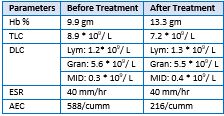An Ayurvedic management of Vataja Kasa - A Case Study
Keywords:
Vataja Kasa, Vasa Bhavit Haridra Churna, PranavahasrotodushtiAbstract
Good health is the main objective of human life. Diseases act as obstacles in maintaining proper health. Respiratory diseases afflict the humans at any stage of the life and can be mild to severe. Kasa is a condition due to Pranavaha Sroto Dushti which originates from Amashaya. The Prana and Udana Vayu are responsible for normal functioning of Pranavaha Srotas, which can be altered due to causative factors in turn lead to manifestation of Kasa. While going through the Samprapti, the pathway of Pranavata is obstructed by the etiological factors like Dhuma, Raja, etc. that act as irritants to Pranavaha Srotas. The cough reflex which has both motor and sensory pathway involves both the Prana & Udana Vata. It is characterized by Lakshanas like Shuska Gala, Shuskakasa with Shuska-Alpa-Kapha, Swarbheda, Parshvashool, Shirashool, Urashool, Dourbalya, etc. Ayurveda has a number of single and compound drugs to cure respiratory disorders. This case study was conducted and observed a positive result in the management of Vatajakasa. Aim: To evaluate the efficacy of Ayurveda management on Vatajakasa. Study Design: Single Case Study. Place: Government Ayurvedic College, Hospital, Kadamkua, Patna. Duration of Study: 21 days and follow up after 7 days. Methodology: Internal medication to reduce the signs and symptoms of Vatajakasa. As a result, this article addresses the problem using Ayurvedic treatment methods like use of Vasa Bhavit Haridra Churna which delivers a safe and effective solution.
Downloads
References
RK Sharma, Bhagwan Dash. Caraka Samhita [Text with English Translation and Critical Exposition based on Cakrapanidatta’s Ayurveda Dipika. Chaowkhamba Sanskrit Series Office, Varanasi. Vol IV, Edition: 2012, Page No: 159, Chapter XVIII, Shloka No: 11-13.
Jameson, Fauci, Kasper, Hauser, Longo, Loscalzo. Harrison’s Principles of Internal Medicine. Vol I, 20th Edition, Pg:230.
Dr Gyanendra Pandey. Dravyaguna Vijnana (Materia Medica-Vegetable Drugs). Part I, Pg: 738.
Dr Gyanendra Pandey. Dravyaguna Vijnana (Materia Medica-Vegetable Drugs). Part III, Pg: 800-801.















